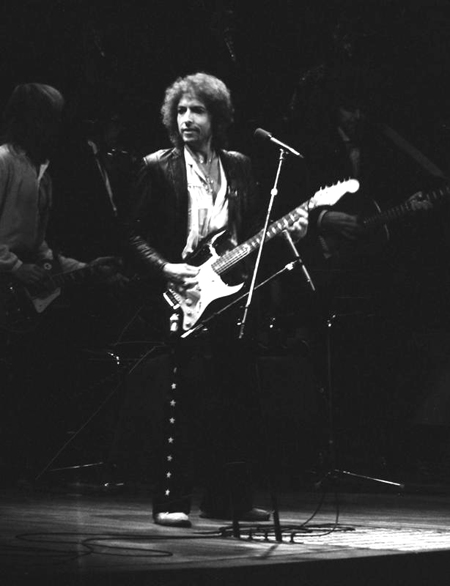Videos by American Songwriter
Bob Dylan, in Nashville. 1978.
But in many ways, “Be-Bop-A-Lula” (and perhaps everything that happened that year) was a reaction to Elvis’ “Heartbreak Hotel,” his first recording for RCA, cut in Nashville in January 1956, after he left Sun Records, Sam Phillips, and Memphis behind.
“‘Heartbreak Hotel’ was one of the most important records in history,” Michael Kosser says slowly one afternoon at the American Songwriter office, emphasizing each word as if it isn’t the hundredth time he’s told the story. “It made Elvis a star.” The song sounded different from his Sun recordings, and added Chet Atkins on guitar and Floyd Cramer on piano, in addition to his regular band mates like Scotty Moore and Bill Black, but it still utilized the famous vocal echo, and it was more raw-sounding than any of the rock and roll music that came after it in Nashville.
*****
Not too long after Elvis cut “Heartbreak Hotel,” Columbia Records, then CBS Records, bought the Quonset Hut from the Bradleys and renamed it CBS Studio B. By the mid-60s, the CBS offices, at what is now 34 Music Square East, were a center of activity on Music Row. A few years later they built a new studio and christened it Studio A, and that’s where Bob Dylan came to record in 1966, with a crack band of Nashville session players like Charlie McCoy and drummer Kenny Buttrey. But, in fact, McCoy knew Dylan’s producer Bob Johnston before the two arrived in the city. McCoy had been up to New York and, by chance, played an impromptu acoustic guitar part on the song “Desolation Row” from Highway 61 Revisited.
“Dylan’s producer Bob Johnston told me that Charlie was the main reason Dylan agreed to record here in the beginning,” says Chambers.
In October 2010, Dylan was back in Nashville, playing at the Municipal Auditorium. When this fact is mentioned to Chambers, he connects even more dots.
“Well, the Municipal Auditorium was built in 1962. Dylan used to play there in the ‘60s. Actually, he would stay at the James Robertson Parkway Ramada Inn, down the street from Municipal, when he was in town. He actually wrote ‘Tonight I’ll Be Staying Here With You’ at that hotel.”
McCoy, who was born in West Virginia but grew up in Florida, came to Nashville as a singer, but after witnessing a Brenda Lee session, decided that being a session player was his true destiny. He remembers Dylan’s reasoning for recording in Nashville with considerable modesty.
“Bob Johnston told Dylan, ‘Look, see how easy that was,’ ” remembers McCoy after the “Desolation Row” session in New York. “That’s how it would be if we went to Nashville,” the producer prodded his young charge.
“Nashville was the place Bob Johnston was comfortable recording, where he’d done all his work to date,” continues McCoy.
But with Bob Dylan, nothing is ever easy.
“We were booked at two, his flight was late, he came in around six, and he told us he wasn’t quite finished writing a song and could we please hang on until he finished,” says McCoy of the session’s inauspicious start. “We started recording at four a.m. the next morning.”


Kudos to Nashville. However, Jimi had developed his non stop practicing habits long before he moved to Nashville. Also, according to many biographers he had soaked up quite a bit of music growing up in Seattle. Don’t twist the facts to perpetuate the non- stop Nashville propaganda program.
^^^What he said. Jimi already already listened to a lot of blues musicians growing up in seattle. What nashville did introduce him to was several artists that he would never hear of on the radio back home and he learnt a good deal from listening to local blues and Rn’B acts in Nashville and from his time on the ‘chitlin circuit’.
Another aspect that he developed here was his songwriting, he was one of the few Black musicians that concentrated on listening to and incorporating elements of non black music into his lyrics and writing. His favorite being Bob Dylan. 🙂